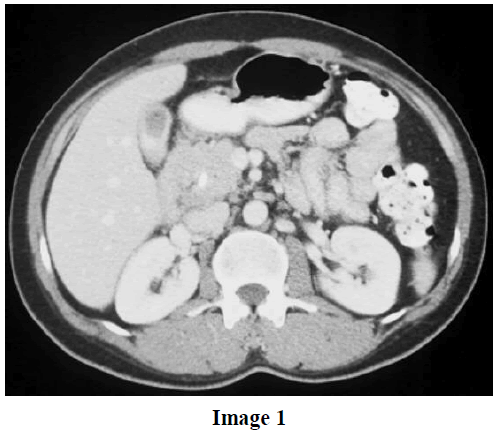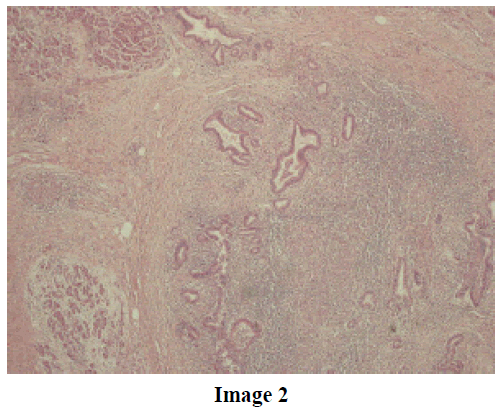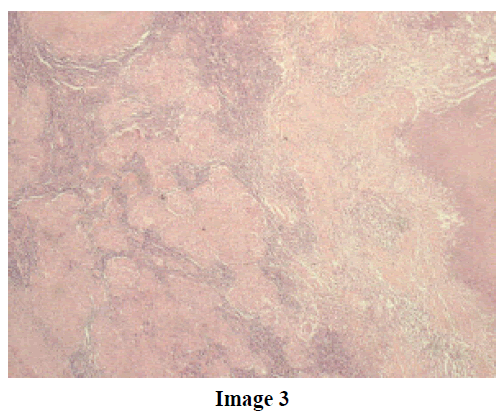- (2005) Volume 6, Issue 6
Sietze A Koopal1, Robby E Kibbelaar2, Jan A Zijlstra1, Jean Pierre EN Pierie1
1Department of Gastro-Intestinal Surgery, Leeuwarden Medical Center
2Laboratory of Public
Health Friesland, Department of Pathology. Leeuwarden, The Netherlands
Received September 9th, 2005- Accepted September 26th, 2005
Jaundice; Pancreas; Pancreaticoduodenectomy; Tuberculosis
A 38-year-old male from Iraq without any history of previous infections presented at our institute with recently developed jaundice caused by a pancreatic head mass. A CT scan of the abdomen showed the mass in the pancreatic head without lymph node involvement or infiltration of the vascular structures (Image 1). ERCP revealed a double duct sign. Endoscopic stent placement adequately decompressed the common bile duct. At laparotomy, frozen section analysis of the lymph node samples (located at the hepatoduodenal ligament, diameter 1 cm, and the radix mesenterii, diameter 0.5 cm) showed no malignancy. A 4-cm mass was palpable in the pancreatic head and a pylorus-preserving pancreatic-duodenectomy was performed. Pathological examination of the specimen showed chronic pancreatitis caused by an extensive necrotizing granulomatous inflammation (Image 2); staining for acid fast bacilli were positive. The peripancreatic lymph nodes also showed typical caseating granulomas (Image 3). The patient was successfully treated with anti-tubercular therapy and is doing well. Isolated pancreatic tuberculosis is extremely rare [1] and is usually not suspected prior to exploratory laparotomy or even definitive histological examinations.



As recently described in literature, it is a relevant problem as abdominal tuberculosis is becoming more common as world-wide emigration increases and, therefore, it should be considered in the diagnosis for a pancreatic mass [2].